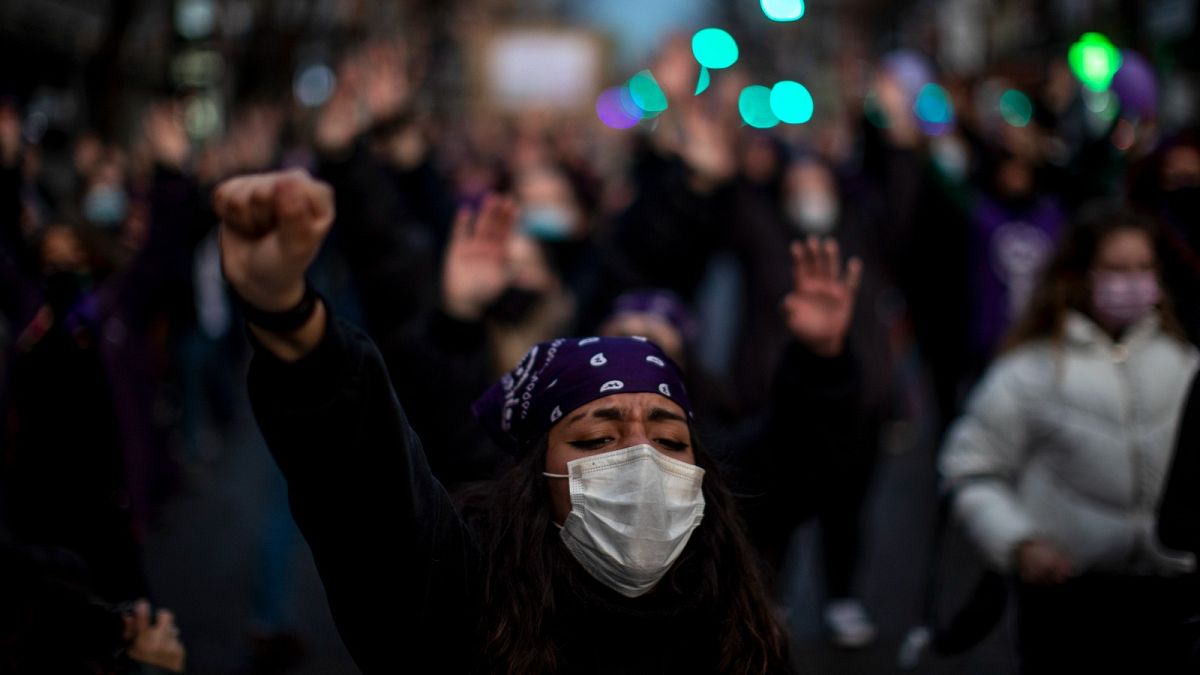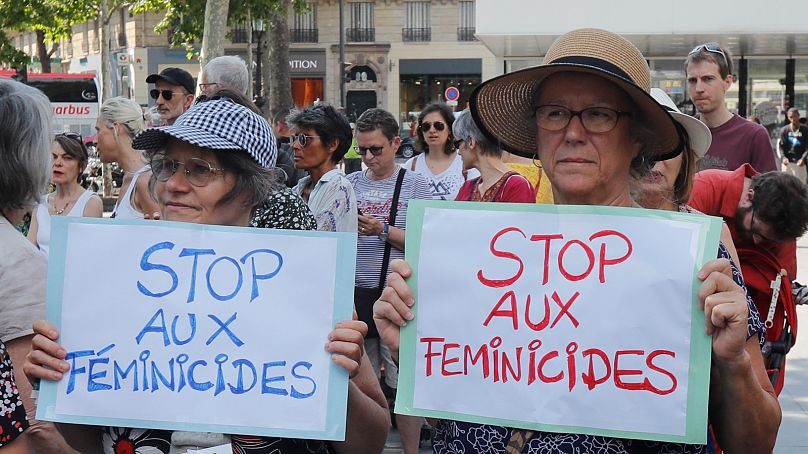Efforts to tackle femicide are moving ahead, but still have a long way.
On New Year’s Day this year, three women were found dead in different parts of France. All had been killed in the previous 24 hours by their partners.
The brutal murders prompted a wave of protest and outcry that, in 2022 in one of the richest countries of the world, the government had failed to tackle femicide.
Femicide is the word given to the violent murder of women and girls because of their gender.
The term was coined in 1976 by the feminist Diana E H Russell and was formally defined by the United Nations in the 2012 Vienna Declaration.
Femicide includes murders from intimate partner violence, honour violence, violence as a result of sexuality and gender identity, and targeted killings (for example of feminist activists).
The challenge for organisations working to tackle femicide is getting states and police forces to recognise it and take action to prosecute offenders and prevent these crimes.
"The impact that femicide has is much bigger than homicide because often we have children that all of a sudden are orphans, and we have family that all of a sudden have to take care of two or more people,” said Christina Fabre from the European Institute for Gender Equality (EIGE).
Children who have lost their mother through femicide are more likely to have challenges throughout their life from educational attainment to health.
All of this has a further knock-on cost to society and to the economy - EIGE estimates gender-based violence costs Europe around €366 billion each year and hopes that quantifying this impact will prompt action.
“We decided just to focus on the most prevalent forms of violence against women. That was intimate partner violence, rape, and femicide,” said Fabre.
The European institute worked to develop a common set of definitions and indicators that could be collected across Europe to give the true picture of gender-based violence.
In 2020, they recorded 444 cases of femicide across Europe – almost certainly an underestimate.
The EIGE is also working on improving the legal responses to femicide across EU member states.
“Most of the member states had a lot of resistance in using the term [femicide],” said Fabre.
A lot of their work on this is having to convince member states that the issue exists and can be identified.
In many cases where women are murdered it is difficult to prove that gender was a specific factor motivating a perpetrator, Fabre explains. This is why contextual factors like how the body was found or the previous criminal history of the perpetrator can demonstrate their motivation for murder.
In many cases, the justice process ends because the perpetrator has died by suicide shortly after committing femicide.
“If we think that femicide is just a crime, but we are not analysing the trends, and then we're not taking into account the motivations of these crimes, we will never prevent them,” Fabre said.
Even within the category of femicide, there are specific types of femicide that can and should be recorded in order to better respond.
For example, while most states recognise and record murders where intimate partner violence was involved, there is not the same approach when sex work or trafficking are a factor.
Spain announced at the end of last year that it would become the first EU member to record all femicides, including where trafficking and exploitation were factors in the murder.
This move by the Spanish government followed a wave of protests against femicide after the murder of two girls by their father.
In Italy, the government passed a new law in June on gender-based violence, one of three since 2019, which included better recording of data.
Before the law took effect, the ministries of health, justice and interior were not obliged to collect data on gender-based violence, said Giusy Muratore, a senior researcher at the Italian National Institute of Statistics (ISTAT).
Muratore and her colleagues at ISTAT carry out a sample survey of 25,000 women on gender-based violence, along with work with survivors of domestic violence.
This information is used both by NGOs to advocate and campaign against gender-based violence, and by parliamentarians to design policy.
“Women's organisations and feminists have been working on this for decades, and there has been complete inaction by the EU,” said Malin Björk, an MEP for the Swedish Left Party.
Efforts to get the EU to ratify the Istanbul Convention have previously been derailed by factions in the EU that want the responsibility for tackling gender-based violence to remain at a state level, and by those who oppose the entire concept of gender-based violence, she explained.
While all EU member states have signed the Convention, it has not been ratified by Bulgaria, Czechia, Hungary, Latvia, Lithuania and Slovakia. Poland also announced in 2020 that it would withdraw from the Convention.
“The parliament has been calling for more resources to combat gender-based violence and more instruments,” she said.
These instruments could be action plans, recommendations or budgetary resources or legislative instruments.
However, this year on International Women’s Day, the EU Commission finally put forward a new directive on gender-based violence.
The proposals include: better victim support, safeguards and protection, together with access to compensation, countering cyberviolence and better representation in the criminal justice system.
Björk and colleagues in the parliament are still in the early stage of scrutinising the proposed legislation, but she is cautiously positive, acknowledging that it is a “big step” but with gaps.
“I think we need more work on prevention. I am the first to say that, as long as the justice system is functioning the way it does today, there is no justice for women, because the conviction rates are ridiculously low. But I do also recognise that we don't want to end up having victims. So, we need to put more effort into prevention,” she said.
For Björk, these prevention measures include: non-sexist education, a feminist curriculum, being able to leave violent partners and having housing and childcare in place.
“As a feminist, I think it's so basic. That to live a life free from violence is a baseline for having equality between women and men,” Björk said.


